And now for something completely different. Personal transport in Antigua is interesting, and pretty cool. A few people have cars, but not many. The streets are all paved with black volcanic rock, and are none too smooth (think of cobblestone), making vehicular progress very slow. Most people walk. A few ride bicycles.
For any significant distance, most local people ride the bus. And what buses they ride. While the tourist buses are like those in every other place, plain and boring, the local buses (called “chicken buses” in the states) are almost without exception decked out with wild colors and designs. Chrome is ubiquitous, as are many mirrors, ornaments and attachments. Every bus has a name, written in Mylar script across the top of its windshield and on its rear. Many sport lights of different colors, in various places around the body, some flashing multiple colors. The roof is invariably covered with a luggage rack, often in chrome, with one or more ladders up the sides and back to reach it.
All the major brands are represented. I saw Ford, GMC, International Harvester, and so on. But what really surprised me was that I saw at least four buses manufactured by Harley Davidson. Who knew?
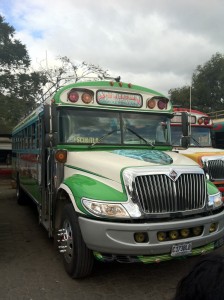
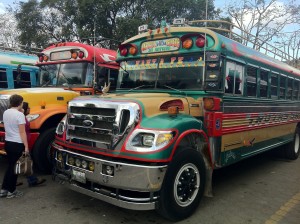
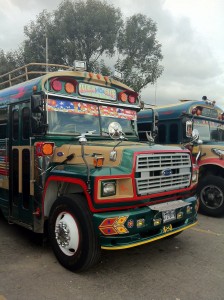 But I haven’t seen any Harley bikes, unlike in Mexico. In fact, while motorcycles abound, very few have engines larger than 150 cc’s. But there is a huge variety of these smaller bikes. The standard marks are represented: Honda, Suzuki, Yamaha and so on, although very few of the models I’ve seen here are available in the states. There are also many brands you don’t see at all in the states, mostly Chinese, like Jialing, Yumbo, Mountain Lion King, Pulsar to name but a few.
But I haven’t seen any Harley bikes, unlike in Mexico. In fact, while motorcycles abound, very few have engines larger than 150 cc’s. But there is a huge variety of these smaller bikes. The standard marks are represented: Honda, Suzuki, Yamaha and so on, although very few of the models I’ve seen here are available in the states. There are also many brands you don’t see at all in the states, mostly Chinese, like Jialing, Yumbo, Mountain Lion King, Pulsar to name but a few.
Small though they are, these are full-duty motorcycles. People ride them both to work and for work. And all other purposes. They ride singly, with a rider and passenger or two, even with whole families. Helmets are rare, appearing mostly on those riding larger bikes.
And these are just the motorcycles. There are also many varieties of motor scooter, some weird fat-tired motorbikes, and a few quadra-cycles cruising around town.
But the mode of transport most outlandish to these USian eyes is the tuctuc (rhymes with juke-juke). Essentially a moto-rickshaw, a tuctuc has a small four-stroke engine, three fat wheels no more than 12-inches in diameter, a four-speed transmission (hitting fourth only on the smooth roads out of town), a roomy driver’s compartment up front, and space for up to three passengers in back. Maybe four, if you’re small and/or willing to be very cramped. The “body” is composed of canvas or fiberglass over a framework of metal rods and tubes. For ten quetzales (about USD 1.30, and 15 on weekends), a tuctuc will take you and yours anywhere in town.
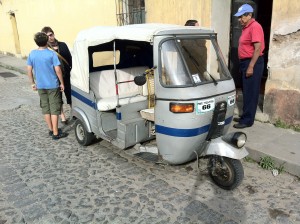
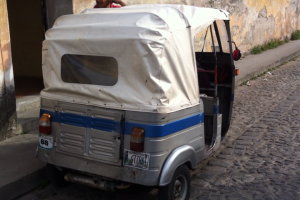 Most tuctuc drivers are aggressive but reasonably sane. But there were a few rides (and recall the fun-filled road surfaces) which left me certain that Hell was missing a bat or two.
Most tuctuc drivers are aggressive but reasonably sane. But there were a few rides (and recall the fun-filled road surfaces) which left me certain that Hell was missing a bat or two.

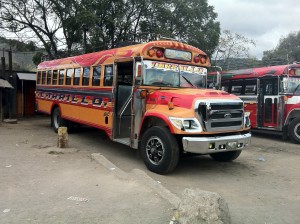
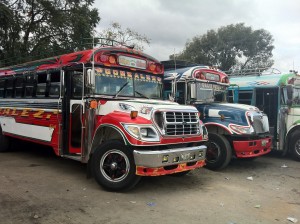
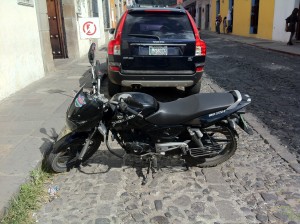
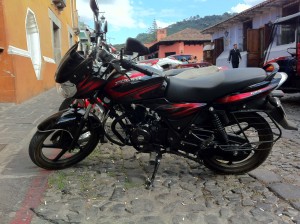
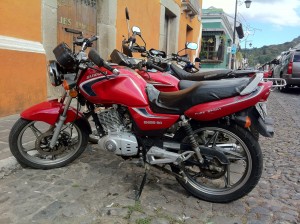
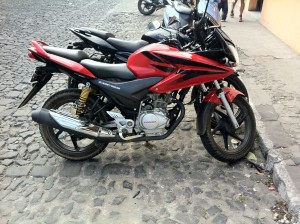
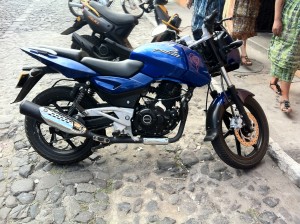

I think the AATA needs those busses to solve its various budget woes. How much cooler would they be to ride? I’ve seen tuctucs elsewhere, too, but called other things, obviously. That blue motorcycle, btw, looks like a transformer.
I have seen more than one travelogue segment on those busses, Henry, and the drivers/owners take great pride in their artistic creations.
As well they ought. They’re works of art.
Bring back one of those cool buses! Love them!
If you buy the bus, we’ll customize and decorate it when we get back.